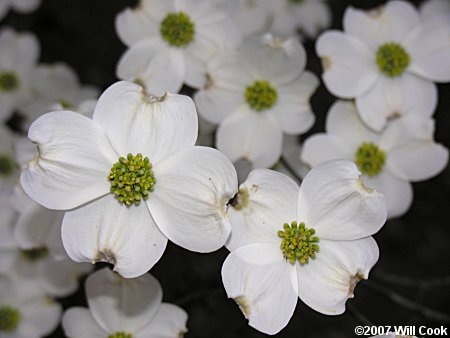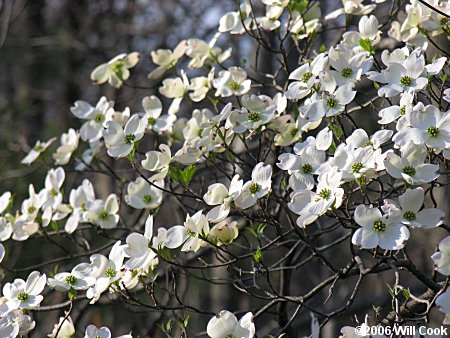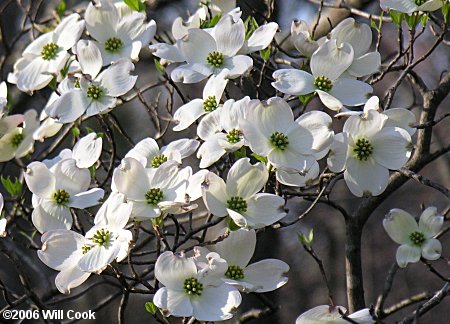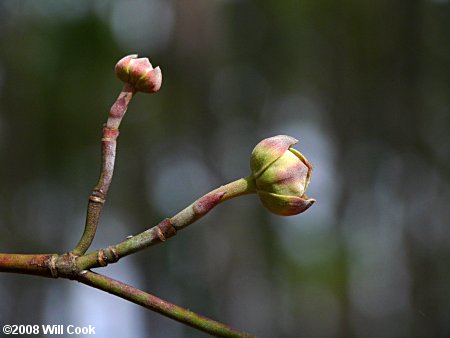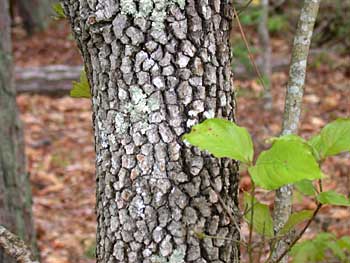Plantae>Magnoliophyta>Magnoliopsida>Cornales>Cornaceae>Cornus florida L.

| Flowering Dogwood is the North Carolina state flower. The actual flowers are small and yellowish-green. Some cultivars have pink bracts. Chapel Hill, NC 4/13/02.
|
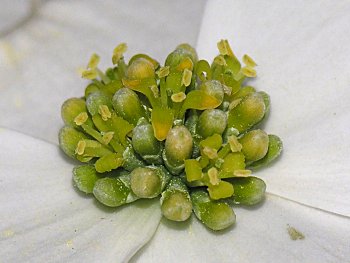
| Close-up of the small, yellowish-green flowers. Chapel Hill, NC 3/31/07.
|
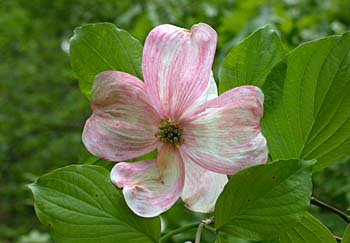
| A wild mutant flower - all the flower clusters on this tree had six pink bracts instead of four white ones. Granville Co., NC 4/27/03. |
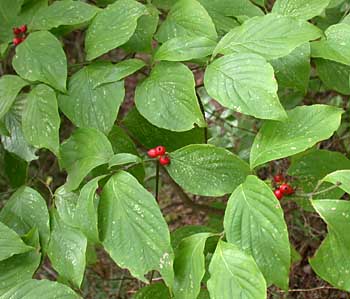
| The leaves are opposite, simple, and have prominent veins. Orange Co., NC 9/20/02.
|

| The bright red fruits, which ripen in September, are eaten by birds. Orange Co., NC 9/20/02.
|
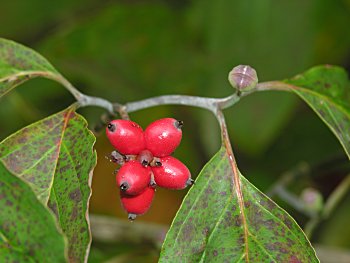
| Note the distinctive shape of the four-parted flower bud. Alleghany Co., NC 9/23/06.
|
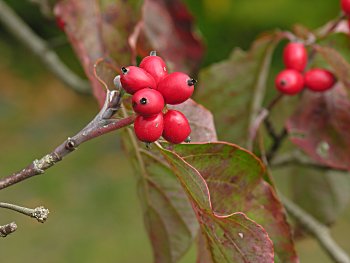
| Carroll Co., VA 10/16/06.
|
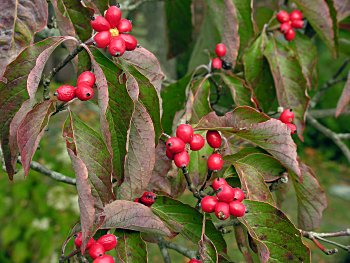
| Carroll Co., VA 10/16/06.
|
